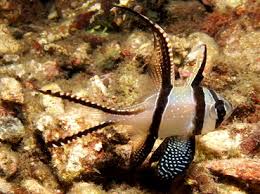Dragons and Their Connection to Symbols of Longevity and Health
For centuries, dragons have been revered as powerful symbols of longevity, vitality, and good health in various cultures, particularly in Chinese and East Asian traditions. Unlike the fire-breathing beasts of Western mythology, Eastern dragons (龙, Lóng) are benevolent creatures associated with divine energy, cosmic balance, and the flow of life force (Qi, 气). Their presence in art, literature, and spiritual practices reflects a deep-seated belief in their ability to bring longevity, protection, and well-being to those who honor them.
This article explores how dragons are linked to longevity and health, examining their representation in mythology, traditional medicine, feng shui, imperial rituals, and modern interpretations of well-being.
Dragons in Mythology: Guardians of Immortality
Throughout history, dragons have been portrayed as immortal beings, often guarding treasures linked to longevity and eternal life. Many legends describe them as keepers of sacred knowledge, guiding humans toward health, wisdom, and longevity.
The Dragon and the Elixir of Immortality
One of the most famous myths tells of dragons guarding the elixir of immortality (长生不老药, Chángshēng bùlǎo yào). In Daoist tradition, this elixir was believed to grant eternal life, and only those who could understand the wisdom of the dragon were deemed worthy of obtaining it. According to legend:
- The Jade Emperor (玉皇大帝, Yù Huáng Dàdì) assigned dragons to protect the secret of longevity.
- Some Daoist sages meditated on dragon wisdom, believing it could extend their lifespan.
- The Legend of Penglai (蓬莱仙境, Pénglái Xiānjìng) speaks of an island where dragons reside, guarding the divine herbs of immortality.
The Nine Sons of the Dragon and Their Role in Protection
Ancient Chinese mythology describes the Nine Sons of the Dragon (龙生九子, Lóng Shēng Jiǔ Zǐ), each with unique abilities. Some of these dragon sons were associated with health and protection:
- Bixi (赑屃) – Often depicted on gravestones, symbolizing long life and strength.
- Chiwen (螭吻) – A protector against illness and misfortune.
- Pulao (蒲牢) – Guardian of resilience and well-being, often appearing in temple bells to ward off disease.
These legendary dragons became important symbols in temples, tombs, and healing rituals, signifying their connection to health and longevity.
Dragons in Traditional Chinese Medicine
Traditional Chinese Medicine (TCM) has long drawn inspiration from dragons, incorporating their symbolic energy into healing practices. The belief that dragons represent Qi (life force) has influenced various remedies, acupuncture techniques, and herbal medicines.
Dragon Bones (龙骨, Lónggǔ) and Herbal Medicine
In ancient China, “dragon bones” were used in medicinal treatments. These were actually fossilized animal bones, ground into powder and believed to:
- Strengthen the body and increase longevity.
- Calm the mind and treat anxiety or insomnia.
- Boost kidney and liver health, essential for maintaining vitality.
TCM practitioners often prescribed dragon bone powder to elderly individuals, reinforcing the belief that the essence of dragons could extend life and prevent illness.
Dragon’s Breath: Qi and Longevity Practices
The concept of Dragon’s Breath (龙息, Lóngxī) is central to Qigong (气功) and Tai Chi (太极拳), two practices focused on cultivating internal energy for long life and well-being. Movements inspired by dragon-like fluidity are believed to:
- Enhance blood circulation and oxygen flow.
- Strengthen the immune system.
- Reduce stress and promote mental clarity.
Qigong masters often emphasize the spiral movements of a dragon, mimicking its flexibility and longevity, teaching that one can “flow like a dragon” to maintain good health.
Dragons in Feng Shui: Enhancing Longevity and Vitality
In Feng Shui (风水), the ancient Chinese art of harmonizing energy, dragons are revered as symbols of longevity, prosperity, and protection from illness. The placement of dragon imagery in homes, temples, and businesses is believed to enhance life force (Qi) and promote good health.
The Azure Dragon and Health Energy
One of the most important Feng Shui dragons is the Azure Dragon (青龙, Qīnglóng), a guardian of the East, representing renewal, growth, and longevity. To attract good health, Feng Shui practitioners:
- Place dragon statues or paintings in the East sector of a home.
- Use jade dragon figurines, as jade symbolizes purity and longevity.
- Incorporate water elements, since dragons are linked to rivers and the flow of life energy.
Dragon Turtles: Longevity and Protection
The Dragon Turtle (龙龟, Lóngguī) is a hybrid creature with a dragon’s head and a turtle’s body, symbolizing health and long life. People place Dragon Turtle statues in their homes or near their workspaces to:
- Prevent sickness and misfortune.
- Strengthen the immune system.
- Encourage stability and longevity in both career and life.
These Feng Shui techniques, rooted in dragon symbolism, remain popular today for those seeking to enhance their health and lifespan.
Imperial Longevity: The Dragon and Royal Health Rituals
For centuries, Chinese emperors associated themselves with dragons to ensure longevity and divine protection. The Imperial Dragon Throne and Dragon Robes were not just symbols of power but also representations of eternal health and vitality.
The Emperor’s Birthday and Dragon Blessings
On an emperor’s birthday, special Dragon Longevity Rituals were performed, including:
- Offerings to the Dragon God (龙神, Lóngshén) for continued health and prosperity.
- Drinking dragon-pearl-infused teas, believed to grant long life.
- Dragon dances to summon positive energy and drive away disease.
These ceremonies reinforced the belief that dragons had the power to extend life and maintain the health of rulers.
The Forbidden City and Dragon Symbolism
The Forbidden City (紫禁城, Zǐjìnchéng), the imperial palace of Chinese emperors, was designed with 9,999 dragon motifs, symbolizing eternal vitality. The number nine, associated with dragons, was believed to:
- Bring divine health protection.
- Ward off illnesses and premature death.
- Align the emperor’s life force with celestial energies.
Even in death, emperors were buried in tombs filled with dragon carvings, ensuring a peaceful and undisturbed afterlife.
Modern Interpretations: Dragons in Health and Well-Being Today
Even in modern times, dragons continue to symbolize longevity and health, influencing festivals, medicine, and lifestyle choices.
Chinese New Year and Longevity Rituals
During Chinese New Year, people celebrate with:
- Dragon dances, believed to bring good fortune and protection from illness.
- Longevity noodles (长寿面, Chángshòu Miàn), representing the long life of a dragon.
- Dragon-themed talismans, worn to enhance health and vitality throughout the year.
Dragons in Holistic Healing
Many holistic health practices integrate dragon symbolism for:
- Emotional balance, using dragon imagery in meditation.
- Physical strength, through Tai Chi movements inspired by dragons.
- Spiritual protection, by wearing dragon jade pendants.
These traditions continue to bridge ancient wisdom with modern wellness practices, keeping the legacy of dragons alive.
Conclusion
Dragons have long been symbols of longevity, health, and vitality, appearing in mythology, medicine, feng shui, and imperial traditions. Whether guarding elixirs of immortality, influencing acupuncture and Qigong, or being honored in Feng Shui, dragons continue to embody the essence of eternal life and well-being.
Even today, their influence remains strong, reminding people that the spirit of the dragon can guide them toward a long, healthy, and prosperous life.


